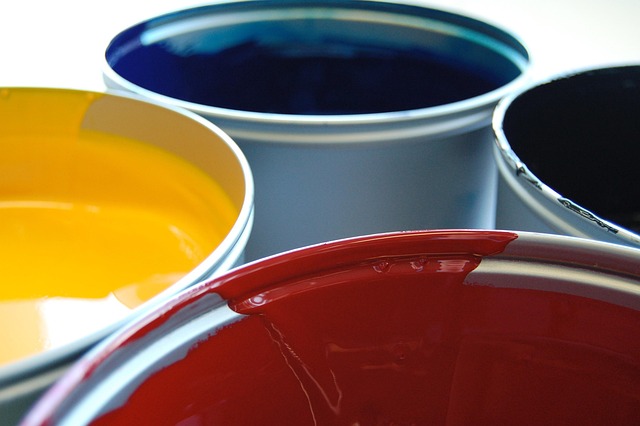In the world of visual storytelling, the journey from sensor to canvas is a complex ballet of light, chemistry, and technology. While the camera captures the raw energy of a moment, the act of printing translates that fleeting spark into a lasting object. Understanding how exposure, optics, and the printing process intertwine is essential for any photographer who seeks to preserve the integrity of their work with optical precision.
The Foundations of Exposure in Digital and Film Media
Exposure is the core concept that governs how much light reaches the image sensor or film. In digital photography, this is controlled by shutter speed, aperture, and ISO. In film, the same principles apply, but the medium responds differently. A well‑balanced exposure ensures that detail is captured across the tonal range, providing the data necessary for high‑quality printing.
- Shutter speed dictates how long the sensor is exposed to light, influencing motion blur and overall brightness.
- Aperture sets the depth of field and the amount of light that enters the lens; a lower f‑number gathers more light.
- ISO controls the sensor’s sensitivity; higher ISO values increase brightness but introduce noise.
When a photographer masters exposure, the image contains a balanced histogram, which becomes the foundation for accurate color reproduction and tonal fidelity during printing.
The Role of Lens Optics in Shaping Image Quality
Optics are not merely about gathering light; they are the sculptors of sharpness, contrast, and color rendition. A lens’s glass elements, coatings, and design determine how faithfully the camera records a scene.
“A high‑quality lens is like a well‑crafted paintbrush. It can capture the subtleties of a portrait or the intricate textures of a landscape with the same level of detail that the eye perceives.” — Anonymous Photographer
Key optical attributes that influence printing outcomes include:
- Resolution – The lens’s ability to resolve fine detail directly impacts print sharpness.
- Chromatic aberration – Misaligned colors can appear as halos; well‑coated lenses mitigate this effect.
- Distortion – Barrel or pincushion distortion can warp composition, requiring correction in post‑processing.
- Contrast – Lens contrast affects the dynamic range captured, which in turn influences print tone.
From File to Print: The Digital Workflow
Once a photograph is captured, the data must travel through a series of steps before it can be printed. Each stage offers opportunities to refine the image and ensure that the final print reflects the original intent.
- Import and Backup – Import RAW or JPEG files into a photo management program and create redundant backups.
- Color Management – Calibrate monitors and use ICC profiles that match the printer’s color space (e.g., Adobe RGB or ProPhoto RGB).
- Image Editing – Adjust exposure, white balance, sharpness, and noise reduction while preserving the data integrity.
- Proofing – Generate a high‑resolution proof to simulate how the image will appear when printed.
During this workflow, a photographer can perform spot corrections, adjust the histogram, and ensure that the tonal range is appropriately compressed for the chosen print medium.
Choosing the Right Printing Medium and Process
Print quality is not solely a function of the image file; the medium and process selected play pivotal roles. Common print media include glossy photo paper, matte paper, canvas, and fine art prints on high‑grade substrates. Each medium interacts differently with inks and light.
- Inkjet Printing – The most accessible method, using CMYK inks. Variants such as pigment or dye‑based inks affect longevity and color accuracy.
- Laser Printing – Provides crisp lines and text, but is less common for photographic prints due to limited color gamut.
- Sublimation Printing – Ideal for canvas, where inks are fused into fibers, yielding vibrant, durable results.
- Platinum or Silver Gelatin Prints – Traditional processes offering exceptional tonal range and archival stability, but require specialized equipment.
When selecting a medium, consider the viewing environment, desired texture, and how the print will age over time. For example, a high‑quality canvas print with a matte finish often complements outdoor photography, while glossy paper may be preferable for vivid color studies.
Mastering Color and Tone in the Print Process
Color fidelity is paramount. Even with perfect exposure and optics, a print can fail if color management is mishandled. The following practices help maintain color integrity:
- Use a calibrated colorimeter or spectrophotometer to set monitor profiles.
- Convert images to the printer’s native color space and avoid unnecessary color space conversions.
- Apply ICC profiles that correspond to the specific printer and paper combination.
- Monitor for color shifts during proofing by comparing prints to calibrated targets.
Tonal range management involves balancing shadows, midtones, and highlights. When converting a RAW file, photographers can use tools like curves and levels to refine tonal placement. In printing, the printer’s tone curve (often called the “printer’s gamma”) can be adjusted to match the desired output.
Printing at Scale: Professional vs. DIY Approaches
Professional printing services bring advanced technology and expertise that can elevate a photograph to gallery standards. However, a well‑equipped home printer can also produce impressive results if approached methodically.
- Professional Services – Offer large format options, archival inks, and high‑end paper. They often provide in‑house proofing and color correction.
- Home Printing – Requires investing in a calibrated printer, high‑quality ink, and paper. Consistency is achieved through rigorous test prints and environment control.
- Hybrid Workflow – Use a local printer for large or archival runs while handling smaller prints or drafts in-house.
Regardless of the approach, the goal remains the same: translate the digital image into a physical object that retains the optical precision of the original exposure.
Archival Considerations and Longevity
Preserving a print for decades requires attention to both the materials used and the environment in which the print is stored or displayed. Factors influencing longevity include:
- Ink Type – Pigment inks are more fade‑resistant compared to dyes.
- Paper Quality – Acid-free, archival paper ensures longevity.
- Environmental Controls – Maintain stable temperature and humidity, protect from direct sunlight.
- Protective Coatings – Varnishes or UV‑resistant coatings can reduce degradation.
Photographers who adopt a mindful approach to printing not only enhance the aesthetic appeal of their images but also safeguard their creative legacy for future generations.
Future Trends in Photographic Printing
Technological advances continue to push the boundaries of what can be achieved in printing. Emerging trends include:
- Laser‑based printing with expanded color gamuts, enabling deeper blacks and richer hues.
- 3D printing of photographic textures, offering new tactile experiences.
- Digital twin repositories that allow instant, high‑resolution reproductions on demand.
- Smart inks that change color under different viewing angles, adding an interactive dimension.
While the core principles of exposure, optics, and precise printing remain unchanged, these innovations promise to broaden the creative possibilities for photographers.
Conclusion: The Art of Translating Light into Matter
Printing is more than a mechanical transfer; it is an art that demands a deep understanding of exposure, optical science, and material science. From the moment a camera sensor captures light to the moment a print sits on a wall, each decision—aperture, shutter speed, lens choice, color profile, paper selection—shapes the final artwork.
By mastering the interplay between camera, optics, and printing technology, photographers can ensure that every print is a faithful, enduring reflection of their vision. Optical precision, achieved through disciplined exposure management and meticulous printing practices, transforms fleeting moments into timeless masterpieces.



